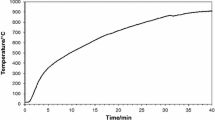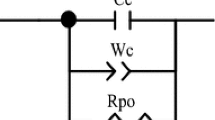Abstract
With a new kind of barrier coating material, namely inorganic-organic polymers, it is possible to obtain high-barrier properties for oxygen, water vapor, and flavor permeation. These hybrid polymers can be synthesized by the sol-gel technique. Network forming reactions and degrees of condensation in the coating sols as well as in the cured coating materials were characterized using 29Si, 13C-NMR and FT-Raman spectroscopy. The oxygen barrier properties of the hybrid polymers were found to be strongly influenced by the inorganic and also by the organic network density. In order to scale-up the excellent laboratory results to pilot plant and production dimensions additional efforts were necessary. For optimization of the barrier coating compositions the influence of the starting compounds on the resulting barrier properties had to be investigated. A constant quality of the coating sols during the industrial processing had to be guaranteed so as to obtain reproducible barrier properties. The influence of storage conditions on chemical reactions in the coating sols, indicated by changes of viscosity, was investigated. Since the curing times of the laboratory system were not transferable to the high speed of the production roll coating process more effective curing methods had to be found. The influence of the storage time of the cured coating materials on the oxygen barrier properties was investigated. Even by storing at ambient temperature further improvement of the oxygen barrier properties was obtained. Only by optimizing all of the above mentioned parameters can the excellent barrier properties result in marketable products.
Similar content being viewed by others
References
S. Amberg-Schwab, M. Hoffmann, H. Bader, and M. Gessler, J. of Sol-Gel Sci. Technol. 1/2, 141 (1998).
M. Gessler, H. Bader, M. Hoffmann, and S. Amberg-Schwab, Coating 10, 358 (1997).
M. Hoffmann and S. Amberg-Schwab, Mater. Res. Soc. Symp. Proc. 519, 309 (1998).
M. Templin, U. Wiesner, and H.W. Spieβ, Adv. Mater. 9, 814 (1997).
S. Hofacker, PhD-Thesis, University Würzburg, 1998.
M. Hoffmann, PhD-Thesis, University Würzburg, 1999.
B. Riegel, W. Kiefer, S. Hofacker, and G. Schottner, Ber. Bunsenges. Phys. Chem. 102, 1573 (1998).
Author information
Authors and Affiliations
Rights and permissions
About this article
Cite this article
Amberg-Schwab, S., Katschorek, H., Weber, U. et al. Barrier Properties OF Inorganic-Organic Polymers: Influence of Starting Compounds, Curing Conditions and Storage-Scaling-Up to Industrial Application—. Journal of Sol-Gel Science and Technology 19, 125–129 (2000). https://doi.org/10.1023/A:1008738912173
Issue Date:
DOI: https://doi.org/10.1023/A:1008738912173




